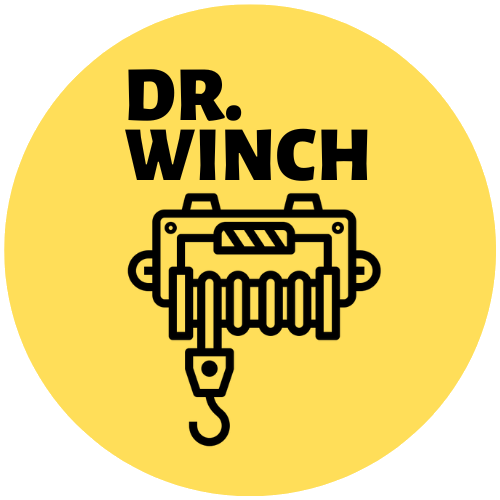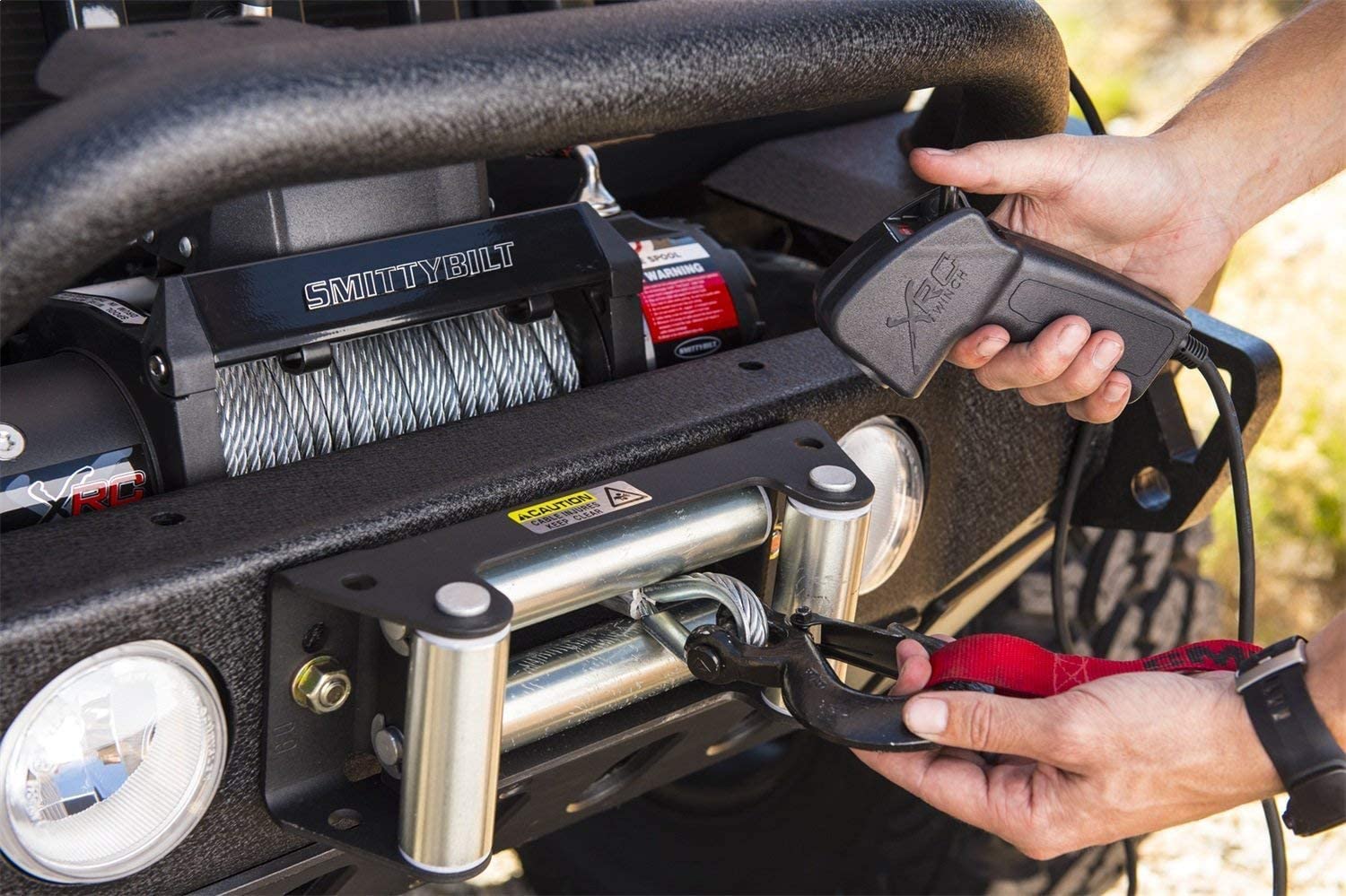A winch might spell the difference between seriously damaging your car or possibly not making it home when it gets tough on off-road paths. Additionally, a winch can free an off-roader who is trapped, even you. Finally, electric winches can be a useful tool to remove obstacles like fallen trees or stones off the rails. You should consider buying the best winch for your truck, if you truck has open differentials in the front and back to get you out of such tight situations.
Of course, there are many more stages than just these three, and depending on the weight capacity, configurations change from truck to truck. Continue reading to find out where and how to mount a winch to truck and crucial safety advice to keep in mind.
Steps to mount a winch on a truck
The front or back of your car is often the ideal location to put a winch. In addition, it is ideal for parking your trailer close to where the trailer hitch connects to your car.
Being versatile might be useful, especially if you can’t use the forward-facing mount to winch yourself out of a tight location. A mount and truck winch can be switched between the front and back of the car.
This will also depend on the car you drive, where you go off-roading, and any locations where you would want that tool and assistance to retrieve your car. The front would likely be your best option if you could only pick one. Here’s how to hook up a winch to a truck:
Method 1 - Front Mounting
You have two options when mounting and connecting a winch to the front of the vehicle: either use an extra battery or the vehicle’s battery for light-to-medium use, or you may even use the auxiliary battery.
Using a Truck Battery
How to mount a winch to a truck using the truck battery:
- You should attach the positive cable to the winch’s positive terminal post.
- The negative cable should be attached to the negative post.
- Carefully feed the two wires into the engine area, keeping them away from heat and friction.
- Using a circuit breaker, connect the positive terminal of the winch lead to the car’s battery.
- The battery’s negative terminal and its negative terminal should be treated similarly.
- Install fast disconnects that can work with the wire gauge going to the winch.
- The leads must be attached to the right sides of the battery and the winch.
Using an Auxiliary Battery
The procedure for auxiliary battery hook-ups is quite similar. You do need to be aware of a few modifications, though. These steps will show you how to install a winch on a truck:
- The auxiliary battery must be fitted with an insulator between the two batteries and parallel with the truck’s battery. The batteries’ two outputs must sum up to 12 volts.
- The auxiliary battery should be configured to draw power from it when you set up your connection so that it may serve as a backup battery for the winch.
- Connect the positive post of the winch to the positive terminal of the truck’s battery using the positive wire as if you were connecting directly to the battery.
- Attach the negative cable to the negative terminal before attaching the winch’s negative post to the truck’s battery’s negative terminal.
- Be careful to make the connection from the ignition circuit when doing so.
- Attach the power wire to the winch’s positive post, followed by the ground wire and the negative post of the winch.
- Make sure the negative and positive wires are fed into the engine compartment without damage and without putting them in danger of being exposed to heat or friction within the engine.
- You can connect the winch’s positive lead to the positive post of the auxiliary battery.
- Repeat steps 9 and 10 for the winch’s adverse side.
- Quick disconnects that align with the ground and power wires should be included on both connections.
- Attach the truck to the auxiliary battery on the side of the winch, and check that all quick disconnects are suitable with the wire gauge being used.
Method 2 - Mounting from the back
When hauling items into or onto a truck’s bed, a rear-mounted winch’s ability to use reversed leverage comes in handy.
A front-mounted winch may make removing a big or damaged car challenging without the entire truck toppling, which might put drivers in dangerous situations. On the other hand, when off-roading or exploring, it is simpler to pull yourself out of tight areas utilizing the pull provided by a rear mount winch. Rear-mounted winches are also superior for self-recovery.
Since it’s dangerous to have the winch fully linked during installation, this step should always come last. Then, follow these instructions to connect the winch to your car’s battery.
- Attach the positive wire to the winch’s positive post, often red.
- Attach the negative wire, which is often black, to the winch’s ground post.
- Transfer the two wires from the front to the engine area.
- Keep the wiring away from any intense heat sources and from any area where it could rub or get pinched.
- Connect the positive wire from the winch to the positive post on the battery (most winches include an in-line fuse).
- Join the winch’s negative wire to the battery’s negative ground post.
Note: Refer my article on how to wire a truck winch if you are facing difficulty in wiring your truck winch.
Your winch should function once you’ve finished this. Next, test the winch using the remote control you provided.
To avoid difficulties with the vehicle not starting later, avoid over-draining the battery[1] while it is not running, and make sure your truck is running while you do this.
Safety Tips to take care of when mounting
- When not used, synthetic rope lightens the winch system’s total load. Additionally, it spools more readily and is less likely to be damaged than other winch lines that kink when improperly spooled.
- Rewind your cable or rope frequently. Before being used actually to pull anything out on the trail, new rope needs to be re-spooled under a test load. It is not ready to use immediately out of the box. Rewrap the coil often in between usage to avoid inner layers becoming harmed or sealing to the drum.
- Always use gloves. A winch in action can force your fingers into the drum, mangling or severing them. In addition, winch wires can tear and slash your hands with razor-sharp precision. Therefore, heavy-duty leather gloves and other winch accessories are frequently offered for sale. A pair can help you stay safe and improve your grip on the cable, which is important.
- Avoid wrapping your wires around trees; doing so usually results in the tree’s death and may even drag the damaged trunk onto you or your car. Additionally, the spool has the potential to become impenetrably coiled against the bark. Instead, to effectively utilize a tree as an anchor, wrap a broad strap around the base of the largest tree you can find, ensuring the tree’s angle and tapering prevent the strap from slipping.
- Use a tow strap rather than a winch line when utilizing a rock as your winch anchor. The sharp angles might harm steel cables and synthetic rope on the rock. You don’t want a boulder and a damaged cable to start rolling toward your car. The larger the rock, the better since trapped trucks need a lot of force to be pulled out.
- Try weighing down a steel winch with heavy blankets, tool bags, thick jackets, or polyurethane winch weights to reduce the risk of being hurt by a severed cable. A broken wire will be drawn toward itself by the weight of the intervening object, preventing it from hurling outward.
- Be thorough. Rushing the setup process almost always fails. Instead, spend time observing the mechanical and physical elements at play, correctly setting up rings, cables, shackles, and loads to assure success.
Summary
It may seem difficult to mount a winch, especially if you’re worried that you won’t do it right or are unclear about what you’re doing.
Giving the job to someone who has done it previously could appear easier and more efficient since they can secure it and ensure that it was done correctly, giving you the peace of mind you would not have had if you had mounted the winch yourself.
How much you spend for a winch installation service will depend on the size of the truck winch, its weight, and how you attached it to your truck. Hopefully, this article will help you learn how to install winch on truck efficiently while keeping in mind the safety precautions.
References
-
Zavalla, F., & Zavalla, F. (2020). Will a winch drain my battery? The Custom Truck. https://thecustomtruck.com/will-a-winch-drain-my-battery/

